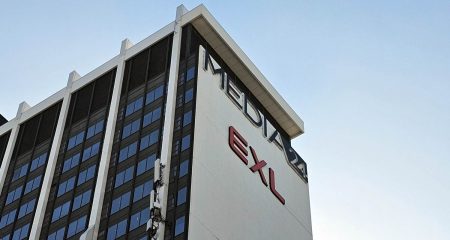
The story of the JSE so far this year has mostly been the story of Naspers. The media giant’s share price has gained over 75% in 2017 and accounts for the majority of the index gains year to date.
It follows that unit trust funds with high exposure to the share have therefore been the top performers so far this year. Top 40 tracker funds have done particularly well, since Naspers makes up around a fifth of the index.
Conversely, funds that don’t hold any Naspers would have found it impossible to keep up. Since the stock has such a massive influence on the benchmark, if it is not included in a portfolio, that fund is going to lag.
An example is the PSG Equity Fund. Despite being one of the top 15 South African general equity funds over the past 10 years, its year-to-date return is only 9% against the 25% growth in the Top 40.
Chief investment officer at PSG Asset Management Greg Hopkins says that they have been receiving a lot of questions from clients about why they don’t hold Naspers in their funds. Given how the share has performed, many people see it as a no-brainer.
Hopkins says that there are two parts to Naspers — the company’s 33% stake in Chinese Internet company Tencent, which is now worth between 20% and 30% more than Naspers itself, and “the rest”.
The company’s interest in Tencent has quite obviously been the reason for its phenomenal recent growth. The Chinese company has been incredibly successful. However, Hopkins believes one should not simply extrapolate recent performance into the future.
Tailwinds
“There are a lot of tailwinds that have helped Tencent over the last few years,” he says. “If you look at the penetration of smartphones in China since 2011, the number has gone from 30% to 70%. Also, back in 2011 daily smart phone usage was around 22 minutes. That has gone up over four-fold to 98 minutes.”
These trends have been hugely supportive for the company. However, these rates of growth are slowing.
“We don’t think they’re coming to an end, but it’s a much more mature market than it was,” says Hopkins. “So one of the big drivers of earnings is no longer there.”

He adds that while Tencent has been very successful at monetising its platform, it’s noticeable that as the company’s earnings have grown, its return on capital has started to fall.
“We also question some of the capital allocation decisions that the management team has made,” says Hopkins. “They bought a 4.9% stake in Tesla for over US$2bn, which puzzled us. They spent another $2bn buying a stake in the troubled company Snapchat. When you look at these two together, they start to potentially indicate a bit of a pattern.”
The non-Tencent part of Naspers is made up of its pay-TV business, print media and e-commerce interests. At Naspers’s current market capitalisation, the market is pricing these assets at less than zero.
“Over the last 10 years, management has spent over R50bn in developmental spend to try to grow this part of the business,” Hopkins says. “They’ve also spent another R25bn on capital expenditure. So they’ve spent a total of around R75bn in this space, and you’ve seen a big acceleration in the last few years.”
However, this part of Naspers is recording very big losses — around R10bn/year.
Hopkins says that this is not necessarily a bad thing, as one can accept a company spending money and taking losses with the promise of future earnings. However, in the past the pay-TV and print media businesses were cash generative and supporting the other spending. This is no longer the case.
“Times have changed,” says Hopkins. “The cash flows have dried up as earnings have fallen. As a result, Naspers’s management now has to go to market to raise capital to fund the spending. They have raised over R78bn in debt and share issuances.
“So we question management’s capital allocation,” he says. “We’re not shareholders, but we would have serious issues with the way management has been incentivised. They have lots of share options, which means that they can swing for the fences. In all the spend that they are doing, they just have to get the next Tencent right and their options are worth a lot. If they don’t, their options aren’t worth much, but they aren’t going to lose any money.”
This is not the type of company that Hopkins and his team finds attractive.
“We don’t like betting on companies that are trading at 50 times earnings and betting that they will grow faster than 40%/year into the future,” Hopkins says. “That’s not our type of business. We do look at it and keep testing our thinking, but we would rather be buying businesses on 11 or 12 times earnings, where expectations are low, and we think there’s lots of asymmetry in terms of getting the odds in our favour.”
- This article was originally published on Moneyweb and is used here with permission




